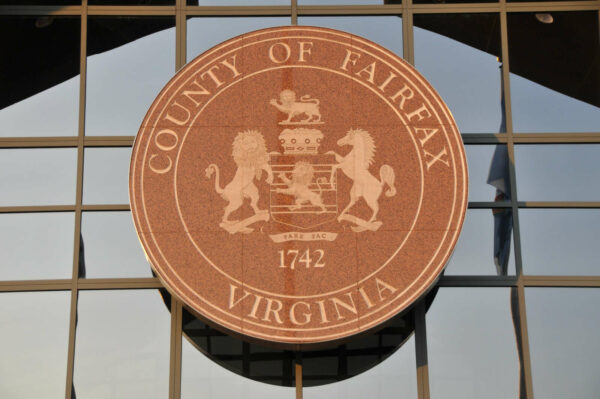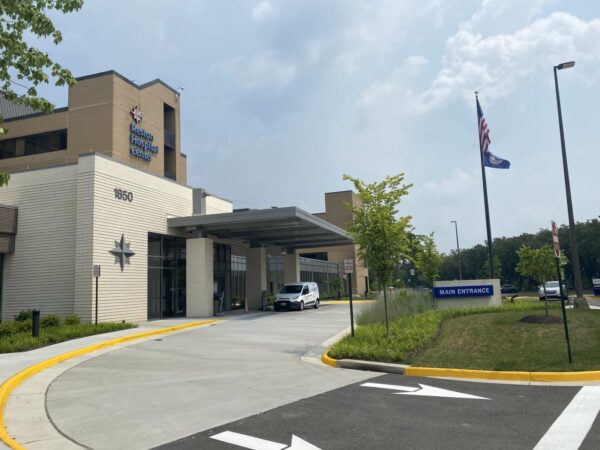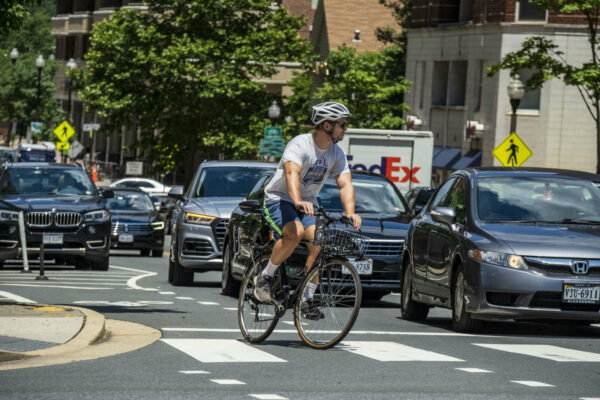If you are convicted of a crime, you can expect several outcomes at sentencing, one of which could be probation. Probation means you do not have to serve time in jail, which can be quite a relief.
However, not serving time in prison doesn’t mean your life will not be disrupted. Sometimes the terms of probation can be so restrictive that keeping them is almost impossible. If you are taking probation as part of a plea deal, it is best to work with a criminal defense lawyer to ensure that the terms of your probation match your charge.
There are also situations where probation is a condition for release for individuals that have served extended time in prison, which also comes with strict control.
You Can Travel But With Restrictions
One significant restriction which comes with probation is out-of-state travel. However, the restrictions can vary based on the terms of individual probation sentences and the underlying circumstances, such as if the person serving the probation had done time for a felony offense.
If you get probation as a first-time offender or through a plea deal, the terms of your probation could be much lighter, and the probation officer may not be so rigid in granting a request to travel when necessary, for example, for a job. But travel restrictions may be much stricter if your probation comes after serving considerable jail time or a felony conviction. Under such circumstances, the probation officer and the court may deem you a flight risk requiring you to report to the probation officer every few days.
But even then, the probation officer has the liberty to grant your request to travel based on the seriousness of your reason for travel. However, you must maintain contact with your probation officer the entire time and communicate any change of plans to avoid a violation of your probation terms.
Probation Violations
If there are reasonable grounds for suspicion of probation terms violations, your probation officer can order your arrest. Under such circumstances, they do not need to get a warrant of arrest or serve the judge with an affidavit. If convicted for probation violations, you risk facing additional sentencing.
In most cases, violation of probation terms results in prison sentences. If you are charged with probation terms violation, you may want to speak to a criminal defense lawyer for help securing a favorable outcome.
It may also be possible to modify your probation terms depending on your state of residence with the help of a lawyer and your probation officer. However, a review of probation terms mainly depends on a probationer’s compliance with the terms in a given period.
In some states, the waiting period for a term’s review is six months. In others, you have to wait until you are halfway through your probation period. Either way, good conduct is a significant factor in determining your success in having your terms reviewed.
A Lawyer Can Help
It is not a legal requirement to maintain contact with your lawyer throughout your probation period. But you may still want to keep them close because you may encounter complications.
For instance, poor communication can hinder your chances of getting travel clearance, so you may want to channel your communication with the probation officer through your lawyer for such matters. Alternatively, you can involve them when you encounter challenges in your quest to get clearance.
Being involved in an accident or watching a loved one go through pain due to an accident can be traumatizing. However, suppose the accident resulted from another’s negligence. In that case, it is ideal to file a lawsuit to get the needed compensation to cover medical expenses and any other form of loss that you may sustain.
Personal injury lawsuits help to provide some form of closure for accident victims and help to offset the financial implications of such accidents. Therefore, those who experience pain and suffering from their injuries sustained in an accident should consult a seasoned personal injury attorney who will walk them through obtaining compensation.
What are Personal Injury Lawsuits?
Personal injury cases are lawsuits filed by one party against another that they believe is liable for the injuries they suffered. A personal injury case allows accident victims to receive compensation from the “at fault” party. Once the compensation amount has been determined, the liable party’s insurance company will pay the injured party.
In some situations, multiple persons may be liable for the injury suffered by the victim. For instance, in a medical malpractice case, both the medical personnel and the hospital may be responsible for damages. When you decide to seek compensation for a personal injury, the attorney may advise that you settle in court or out of court.
If the victim decides to opt for an out-of-court settlement; the attorney will go through negotiation and mediation. The attorneys of both parties and the insurance companies will negotiate and come to an agreed amount, which is formally documented and paid out. Many attorneys often advise for out-of-court settlements; however, where this fails, your attorney may opt for filing a lawsuit.
Grounds for Filing Personal Injury Lawsuit
There are several grounds on which an individual can file a personal injury lawsuit, and they include:
- Situation of negligence: Negligence is usually the most common ground for filing a personal injury lawsuit. If an individual fails to exercise caution or a certain level of care towards another, thereby leading to injury or losses, they can become culpable for such losses.
- Intentional wrong: This results from any deliberate action the defendant carries out towards the plaintiff that led to the injury.
- Strict liability does not consider the defendant’s intention or whether they acted negligently. For instance, where a defective product causes injury, the product’s manufacturer will be held liable even if they had good intentions.
Types of Personal Injury Cases
There are various types of personal injury cases. Individuals can file a lawsuit and seek compensation for injuries sustained due to any of the following:
1. Slip and Falls
Slips and falls are among the most typical personal injury cases. Owners of properties have a legal obligation to ensure that their properties are safe for individuals on the property. Suppose people sustain an injury on a property and the cause is traceable to the negligence of the owner of the property.
In that case, the landlord can be held liable and required to pay compensation to the victim. Where the property in question is a rental property, the extent of the landlord’s liability may be determined by the contract terms, which specify the owner’s legal duties. This means that the landlord may not be liable for every slip and fall.
2. Car Accidents
Most road accidents occur due to negligence on the part of a road user. Car accident cases make up a large percentage of all personal injury cases recorded in the United States. Where accidents occur because of a driver’s carelessness, the driver will be required to pay compensation to the victim.
However, there are exceptions when the accident occurs in a “no-fault” state. In no-fault states, the insurance company pays off the driver’s financial liabilities except where the insurance does not cover the injury.
3. Slander and Libel
Unlike other personal injury cases where the defendant is liable for another’s injury, slander and libel cases hold the defendant responsible for damages to another’s reputation due to false-negative statements made against the victim. For a case of slander and libel to hold water, the plaintiff must prove that they suffered financial losses due to untrue statements attributed to the defendant.
4. Battery and Assault
This type of personal injury does not have elements of negligence or carelessness. Instead, it charges the defendant for intentionally attacking and inflicting physical harm on another in most cases. Most times, assault and battery personal injury cases are also accompanied by filing a criminal lawsuit against the defendant.
5. Medical Malpractice
Healthcare providers face the risk of facing a personal injury lawsuit in instances where their negligence results in the injury or death of their patient. Once it has been established that the patient’s injury was caused by treatment that was below the standard care, the medical practitioner or practice can be held liable for such injuries.
6. Dog Bites
Dog owners are financially culpable for injuries caused by their dogs. The extent of responsibility, however, is particular to different states. For instance, in some states, the “one-bite” rule applies. Under the “one-bite” rule, the dog owner is liable if the dog has shown signs of aggression in the past, but the owner failed to take any action to remedy that.
The last two years have made history in the number of fatalities recorded on American roads. The spike in fatalities was noticeable soon after most states went on lockdown to curb the spread of COVID-19.
The uptick came as a surprise to experts because the expectation was that the rate of fatalities would slump with fewer cars on the road. As the economy reopened and more cars came back on the road, the rate of deaths on the road seemed to change for the worse, with approximately 32,000 deaths recorded in the first nine months of 2021. That figure is 12 percent higher than the numbers recorded in the same period in 2020.
Pedestrians Death Statistics
While most recorded fatalities involved persons in a vehicle, pedestrian deaths have also shown a drastic increase. According to the Governors Highways and Safety Association, approximately 6,721 pedestrian deaths were recorded in 2020. This number represented a 4.8 percent increase in the previous year’s numbers, at 6,412. The NHTSA is yet to release 2021 data but going by the accidents reported in the first nine months of the year, pedestrian deaths are likely to hit a record high.
While the last two years have been especially bad, the last decade has seen a steady rise in pedestrian fatalities, with data indicating a 45 percent rise in fatal pedestrian accidents between 2010 and 2019. In the ten years, 53,435 pedestrians died after being hit by vehicles.
Anxiety Plays a Role
According to experts, the high incidence of pedestrian fatalities in 2020 and 2021 may have resulted from anxiety, DUI, and the fraying of social norms. “2020 was the darkest year in the recent past; people lost jobs, and the future looked very uncertain,” says car accident attorney Maxwell Paderewski of Lone Star Injury Attorneys .
The uncertainty causes anxiety which presents a high likelihood of taking the driver’s mind from the road resulting in an accident. The fraying of social norms like meeting up with friends and relatives meant that many drivers did not find a way of relieving built-up pressure further increasing anxiety evidenced by a surge in road rage.
Lack of Enforcement
The open roads also created an opportunity for drivers to engage in risky driving behavior like speeding. In 2020 a woman was arrested for killing a pedestrian while speeding along Central Avenue. According to her boyfriend, they were engaging in a game of racing home in separate cars. This is only one case among many where drivers were engaged in reckless behavior on open 2020 roads that had a record number of auto fatalities despite the low volume of cars on the road.
Lack of enforcement in 2020 also contributed to reckless driving at the height of the pandemic, even as police minimized traffic stops for fear of exposure. This lack of enforcement encouraged some drivers to engage in risky driving behavior like Driving Under the Influence (DUI).
The Pedestrian Share the Blame Too
Drivers are not to blame for all pedestrian deaths. Sometimes it is the pedestrian that is at fault. According to data from the NHTSA, three out of four passenger deaths happen at night. Unfortunately, not many pedestrians think about visibility when walking at night, increasing their possibility of being hit by a vehicle.
It is unlawful for a pedestrian to leave the sidewalk and enter the road in a manner that puts a motorist in danger of hitting them. Unfortunately, jaywalking is pretty common, especially with intoxicated pedestrians increasing their chances of getting hit.
Crime rates across the U.S. have steadily fallen over the past few decades. However, the murder rate rose 30 percent between 2019 and 202, the most significant single-year increase since the early 1900s (1905, to be precise), according to the Centers for Disease Control and Prevention (CDC). This increase even exceeded the 20 percent rise in the murder rate from 2000 to 2001, including the deaths resulting from the 9/11 terrorist attacks.
Discussions regarding appropriate law enforcement practices increased following this unexpected uptick. Over the years, several suggested police reforms have been proposed, ranging from the widespread use of body cameras to abolishing the police.
Debate On How To Reform Police
The yearly declines in murders and calls for increased vigilance in the wake of police killings prompted police reforms in past years. What was already a widely-debated topic and become even more controversial in the face of continuing community unrest and increasing crime rates.
Some are proponents of harsher policing measures to help curb what many fear will be a continuing problem (that is, they fear the murder rate will continue to rise), such as re-introducing stop-and-frisk policies. Others advocate for reforming current policing measures, such as bringing in use-of-force consultants and better de-escalation tactics. And yet more want to integrate expanded services that involve the police coordinating with community services, such as teaching officers how to respond to calls involving mentally ill or disabled individuals.
There is little agreement between political factions (and even within the parties) on the most appropriate reforms. Many are concerned about addressing persistent violence without violating individuals’ constitutional rights or further damaging the relationship between officers and the communities they protect.
Potential Causes For Violent Crime Increases
Similar to the murder rate, aggravated assault rose roughly 12 percent between 2019 and 2020. Violent crime increased approximately five percent during this same period, though rape and robbery (two specific subsets of violent crime) both decreased.
There is conjecture surrounding what caused the sudden upward trend in murder and other violent crimes. Two commonly-cited potential causes are the economic and social stress brought on by the ongoing COVID-19 pandemic and the strained relations between police and communities following events such as the murder of George Floyd.
However, preliminary data suggest that it may be possible to rule out responses to police killings as one reason for the increased murder rates. As reported by The Washington Post, which tracks police-involved fatal shootings, the number and circumstances of fatal shootings remain relatively consistent (roughly 1,000 per year). There was an increase from 2019 (999 shootings) to 2020 (1,021 shootings), but a decrease from 2020 to 2021 (962 shootings).
Context For The Increased Murder Rate
Though this sharp rise is the largest single-year increase recorded since the early 1900s, the 2020 murder rate (7.8 homicides per 100,000 people) was still 22 percent lower than the 1991 murder rate (10 homicides per 100,000 people) and far below the murder rates of the 1970s and 1980s.
Additionally, the Pew Research Center reported that roughly 61 percent of U.S. adults described violent crime as a “very big problem.” Although, the murder rate for 2020 was 42 percent lower than the suicide rate (13.5 deaths per 100,000 people) and 71 percent lower than the rate of deaths related to drug overdoses (27.1 deaths per 100,000 people).
As discussions continue for what reforms are most appropriate for the future, it is important to keep historical context in mind. In this manner, individuals will be able to propose reforms and practices informed by the past but equipped to handle the present and future.
Unexpectedly losing a loved one is traumatic, and no amount of money could replace that pain. When the death occurs due to someone else’s negligence or irresponsible actions, the grief can feel even more severe. However, filing a wrongful death lawsuit can help lessen the financial burden and provide a sense of justice for the recovering family.
Child custody disputes are not uncommon when the relationship between the parents has come to an end. When the matter cannot be settled amicably, parents may have to involve lawyers, a mediator, or even seek the court’s intervention on who the child(ren) will live with.
If you are paying the fees for a child custody hearing, especially without savings, your costs will most certainly increase the burden on an already stressful court case. The good news is that understanding what to expect in a child custody case can help you to minimize your costs.
The Average Cost of a Child Custody Case
“Most parents do not pursue child custody after a marriage has broken down because of the additional stress and high costs that come with it,” said family lawyer Nicole Bikakis of Dolan Divorce Lawyers, LLC. While child custody battles can be expensive, the cost may vary widely due to the many variables involved in a child custody case.
Under normal circumstances, the cost will range somewhere between $3,000 to $40,000 in total expenses. However, it can be far more expensive based on the case’s circumstances. Attorney’s fees account for a large portion of the overall total cost, but there are more factors that determine how expensive a case will be.
Here are some of the factors that greatly affect the cost of a child custody case.
Type of Custody Dispute
Much like divorce, there are two different types of child custody disputes: contested or uncontested.
Having a contested case typically means there is a challenge or dispute regarding how the child’s custody will be handled. For instance, if one party is determined to have sole custody and doesn’t cooperate or agree to anything, the case will proceed to trial in court. This often requires depositions, court time, and much more.
On the contrary, having an uncontested case means both parties agree on all the major issues. Since both parents already agree on most issues, an uncontested child custody case will cost a lot less to resolve than a contested case. In addition, an uncontested case gives the option to use mediation instead of a trial.
Although mediation is not free, it is the less expensive option. A mediator is often paid hourly and charges anywhere between $100 to $300 per hour.
Specialists and Expert Witnesses in The Custody Case
If the custody case is aggressively contested, the court may call a specialist or an expert, such as a psychologist or doctor, to give their opinion. However, these professional witnesses can be very expensive. Even if the dispute is amicable, the parties involved may still need to undergo a custody evaluation.
Custody evaluation, including tests, interviews and professional monitoring, also impacts the overall cost of a child custody case. It can cost anywhere between $1,500 to $6,000.
Miscellaneous Fees
Besides the cost of an attorney, the overall cost of a child custody case will also include some miscellaneous fees. An example of a miscellaneous fee is the payment for the sheriff or a third-party process server who represents the other party, which costs approximately $30. Other additional fees might include the fees associated with filing the required documents and papers with the court, which can cost as little as $1 or as much as $300.
Putting It All Together
Child custody cases can be emotionally and financially draining to parents. Since these cases usually get heated and can take time to resolve, you need a family lawyer in your corner to ease your burden while working through this complicated legal matter.
In the first six months of 2021, the U.S recorded the highest death toll in the past 15 years. The secretary of transportation, Pete Buttigieg, considered the event a “crisis,” stating that above 20,000 died in road accidents within the first six months, leaving behind thousands of loved ones. These fatalities can not and should not be accepted as an everyday event in America.
“The increase in road fatalities notwithstanding the restrictions in movement as a result of the pandemic is a cause for concern,” says Lin McCraw, personal injury attorney.
There have been collective efforts from law enforcement agencies and transportation officials to bring down the number of deaths to a bare minimum.
Death Toll Statistics
Drawing from the Fatality Analysis Reporting System (FARS), an estimated number of 20,160 people died in vehicle traffic crashes within the first half of 2021. This figure represents about an 18.4 percent increase compared with the first half of 2020, which had a figure of 17,020 as projected.
This figure not only represents the highest fatality rate ever recorded in the U.S. since 2006, but it also represents the highest percentage increase ever recorded in a half-year in the data record history.
According to the U.S. Department of Transportation, 8,935 fatalities were recorded in the first quarter, a 13.1 percent increase from previous quarters. The department recorded 11,225 deaths in the second quarter, a 23.1 percent increase. The sum of the two quarters records a total of 20,160 fatalities and a percentage change increase of 18.4%.
Traffic Safety Misbehaviors
Observation reveals that many drivers, especially motorists ignore the speed limits while hurrying to meet up with an occasion, a job, or an appointment. And, they fail to obey basic safety rules like wearing a seat belt, which has increased the number of ejections from fast-moving vehicles.
Private research supervised by the federal transportation safety expert reveals that some drivers use their cell phones to call or chat while behind the wheels. Many fatalities have also been linked to the use of drugs and alcohol during the COVID-19 period. These factors have contributed to the increase in road fatalities.
Sometimes body weakness can also contribute to poor driving, such as sickness or sleepiness. Though this might appear to be outside the driver’s control, it can be managed by just staying out of the wheel for the period.
This suggestion also stands for taking some medication before stepping on the wheels. No matter how compelling, these situations have consequences for the public’s safety.
Caution Against Traffic Safety Misbehaviors
In reaction to these misbehaviors, the deputy administrator of the National Highway Transportation Safety Administration (NHTSA), Dr. Steven Cliff, commented in a sad and cautionary note. He considered the report disheartening.
Drivers could do more to reduce accidents on the road by wearing a seat belt or driving with extra care, which involves avoiding any form of distractions while on the wheel. He urged that everyone put hands on deck to prevent road fatalities and end any form of dangerous driving.
The road safety authorities, including the police, have taken it upon themselves to trail speeders and offenders who violate road safety rules in hopes of reducing accidents and influencing people to take more precautions.
For example, the Government officials of some Districts, the District of Columbia, have vowed to address safety issues involving roads’ optimal signage and speed limits design and construction, particularly to safeguard pedestrians and bicyclists.
Wrapping up
Regardless of the spontaneous rise in road fatalities, the situation can still be cushioned by intentionality and selflessness on the part of everyone, which includes drivers and road authorities. If drivers, be you, motorcyclist, bicyclist, or vehicle, can be more responsible behind the wheels, there certainly will be a decreasing change in road accidents.
Reston Hospital Center is now requiring its staff to get at least one dose of the COVID-19 vaccine, reversing course on a previous policy that did not require staff to be vaccinated.
The hospital, which is part of the HCA Healthcare, did not institute a vaccine mandate due to a pending court case against vaccine mandates from the Occupational Safety and Health Administration and the Centers for Medicare and Medicaid Services.
In a 5-4 ruling last week, the U.S. Supreme Court allowed the vaccine mandate, which covers nearly all healthcare workers, to proceed. The ruling covers two dozen states under federal injunctions that prohibited the CMMS from imposing mandates. It applies to roughly 76,000 health care facilities, including hospitals and long-term care facilities.
In their opinion, justices implied that the court’s ruling overrode state laws that ban vaccination requirements at facilities taking part in the Medicaid and Medicare programs. As a result, failing to comply with the ruling could compromise some health care facility’s ability to serve patients under the Medicare and Medicaid program.
“To ensure our ability to continue caring for Medicare and Medicine patients, Reston Hospital will comply with the CMS mandate and require colleagues covered by the mandate to receive the COVID-19 vaccine or seek a religious or medical exemption,” Suzanne Kelly, the healthcare system’s marketing and communications director, wrote in a statement.
The court also ruled that the OSHA mandate for businesses with 100 or more employees was not enforceable and exceeded the office’s statutory authority.
All staff is required to receive their first dose of the vaccine by Jan. 27 and be fully vaccinated by Feb. 28.
The hospital did not provide information on vaccinations rates for staff, although a spokesperson said a majority of its staff are vaccinated.
Angela Woolsey contributed to this report
Northam Advocates for Vaccine Requirements — Gov. Ralph Northam urged business leaders to follow the public sector in setting COVID-19 vaccination mandates at a Capital Region Business Forum in D.C. yesterday (Thursday). His comments came hours before President Joe Biden announced that all businesses with more than 100 workers must require the vaccine, among other new rules. [Inside NoVA]
Feds Use Reston Company’s Data Against Facebook — The Federal Trade Commission revealed user data on Wednesday (Sept. 8) that officials said supports their antitrust lawsuit against Facebook, which argues that the social media company has a monopoly. The FTC cited data from Reston-based market research firm Comscore that it says Facebook uses to prepare materials for CEO Mark Zuckerberg. [Bloomberg]
Tephra Sculpture Celebration Kicks off Art Festival — The Northern Virginia Fine Arts Festival starts today (Friday) with a long-awaited celebration of artist Sue Wrbican’s surrealist-inspired Buoyant Force sculpture in Reston Town Square Park. Now in its 30th year, the festival will continue through the weekend with live performances and more than 200 artists present to share and sell their work. [Tephra ICA]
Smithsonian Creates Archive of 9/11 Memories — “The Smithsonian National Museum of American History is gathering written and recorded memories of 9/11 for the 20th anniversary of the attacks. You can submit your written memories, photos, or a video to the Smithsonian’s ‘9-11: An Evolving Legacy’ website. You can also read what has been submitted so far.” [DCist]

COVID-19 Vaccine Recommended for Pregnant People — “COVID-19 vaccination is recommended for everyone 12 years and older, including those who are pregnant, breastfeeding or would like to get pregnant. The rise in COVID-19 cases, low vaccine uptake among pregnant people, and the increased risk of severe illness during pregnancy make vaccination more urgent than ever.” [Fairfax County Health Department]
Local Cycling Studio Announces Vaccine Requirement — Starting Sept. 1, New Trail Cycling in Lake Anne Plaza will require patrons to provide proof that they’ve been fully vaccinated against COVID-19 to take an indoor class. Owner Liz Camp says she’s not aware of any other businesses in the Reston and Herndon area with a similar policy but felt it’s a necessary extra step to keep people safe and healthy as cases rise. [New Trail Cycling]
Police Union Supports Eliminating Ticket-Writing Quotas — The Virginia Police Benevolent Association, which represents 750 state troopers, says it’s working with the General Assembly on a law that would prohibit law enforcement agencies from imposing quotas on officers, saying that approach is outdated and leads to more negative interactions with the public. Virginia State Police officials deny using quotas, but emails suggest troopers are evaluated in part by how many tickets they write. [WTOP]
Photo via vantagehill/Flickr
Metro Reports Pandemic Ridership High for Fourth of July — “The transit agency said it saw a pandemic-record high ridership during the [Independence Day] holiday. As of 10 p.m. Sunday, about 174,000 trips were taken on the rail system, Metro tweeted Sunday night. That’s the highest single-day ridership since the beginning of the coronavirus pandemic.” [WTOP]
Man Arrested for Attempted Robbery in Reston — “Officers from the Reston District Station of the Fairfax County Police arrested a Centreville man Thursday [July 1] in connection with an attempted robbery in Reston…The victim returned to his car, which was parked near the intersection of Clubhouse Road and North Shore Drive around 4:53 a.m., when he found a man rummaging around inside it, police say.” [Patch]
Leidos Offers Employees a Year’s Pay to Get COVID-19 Vaccine — In an effort to counter slowing inoculation rates, the Reston-based information technology contractor has set aside $1 million to give 10 randomly selected employees a year’s worth of pay if they get the COVID-19 vaccine. Eight Leidos workers have died from the virus, including one D.C. area resident. [The Washington Post]
Virginia’s Death Row Officially Vacant — “With the death penalty formally abolished in Virginia as of this week, death row is now officially vacant, according to prison officials. Department of Corrections spokeswoman Lisa Kinney said the two remaining prisoners facing death sentences were moved off death row after the legislation was signed earlier this year.” [Virginia Mercury]

New Laws Take Effect in Virginia — A host of new laws passed by the General Assembly take effect today (Thursday), including the legalization of simple marijuana possession, the abolition of the death penalty, and a requirement that drivers change lanes when passing bicyclists. The fine for littering is now $500, up from $250, and it is now illegal to intentionally release a balloon outside. [Patch]
Police Community Forum Tonight — The Fairfax County Police Department’s Reston District Station will hold a virtual community information forum at 7 p.m. today that will include discussion of trends, upcoming events, and officer and case highlights from the past month. Send questions to [email protected]. [RA/Twitter]
Republican Challenger to Ken Plum Will Be on Ballot — Veteran Matt Lang will officially appear on the Nov. 2 general election ballot as the Republican candidate for the 36th House District, which includes Reston and is currently represented by Del. Ken Plum. The State Board of Elections approved his candidacy upon appeal yesterday (Wednesday) after his application was initially blocked by a late filing certification. [Virginia Public Access Project]
Changes to Permitted Agritourism Activities Approved — “Fairfax County supervisors, despite objections from some local residents and environmental groups, on June 22 approved new ‘agritourism’ rules that will allow certain by-right commercial operations in agricultural settings…Allowable activities include farm tours, harvest-your-own activities, seasonal festivals and attractions, events, hiking, horseback riding and other activities, historical and cultural endeavors.” [Sun Gazette/Inside NoVA]

The Fairfax County Board of Supervisors is working its way toward letting public workers collectively bargain in the wake of a statewide change in 2020 to lift a decades-old restriction.
A board’s personnel committee met yesterday (Tuesday) to discuss a draft ordinance that would let Fairfax County workers make union contracts with the county government, giving them the power to negotiate pay and other benefits.
“I think we’re moving in a good direction,” Dranesville District Supervisor John Foust said after sharing concerns that the proposed ordinance might exempt too many employees from collective bargaining.
While managers, supervisors, volunteers, and other workers are slated to be excluded under the draft ordinance, the board is looking at where temporary workers such as summer lifeguards and seasonal park workers as well as non-merit employees should fall.
The proposed ordinance would serve as the framework for what can and can’t be done through collective bargaining. Once approved, it would allow workers to vote to form a bargaining unit, and employees who don’t want to be involved wouldn’t have to pay dues but could still receive the benefits of the change, Mason District Supervisor Penny Gross said.
The draft discussed Tuesday calls for collective bargaining agreements that would last three years or longer, with separate units for general government employees, police, and fire and emergency services. It also bans strikes and spells out numerous other issues.
The county’s ordinance would be separate from Fairfax County Public Schools, which has over 24,000 employees.
Gross, who chairs the personnel and reorganization committee that’s overseeing the development of the draft, said she expects the board will pass an ordinance, which could happen this year.
SEIU Virginia 512, a union that already includes over 2,000 members in Fairfax County from dues-paying maintenance workers and nurses to librarians and social workers, welcomed the board’s overall support.
But union president David Broder says the ordinance still falls short in several areas. Namely, he says it “artificially narrows” the scope of bargaining, excludes working conditions among the topics that can be negotiated, and could potentially leave thousands of workers out of the collective bargaining process.
“We’ve learned during the pandemic…that being able to bargain over working conditions is critical,” Broder said, noting the importance of safe and clean work sites, personal protective equipment availability, and scheduling.
Lee District Supervisor Rodney Lusk shared concerns about working conditions for public works and sanitation workers, expressing support for change.
Collective bargaining agreements could involve some 10,000 workers, Gross told Reston Now, and the board is gathering more information on non-merit employees to help with its determinations.
“We have one opportunity to get this right, which is why we’re taking a little extra time to work on the ordinance,” Gross said.
In 1977, the Supreme Court of Virginia ruled that public-sector collective bargaining agreements weren’t permitted and existing ones were invalid, noting the state legislature could change that.
The General Assembly and governor approved legislation last year that gave localities the authority to develop ordinances for recognizing labor unions and permitting collective bargaining. That measure took effect on May 1.
The personnel committee will meet again on July 20, and the board expects to have a public hearing in October.
via Machvee/Flickr
If you’re passing a cyclist or group of riders in a vehicle, you’ll soon have to change lanes a lot more.
A new law going into effect July 1 will require drivers to switch lanes if they can’t maintain three feet of distance when passing cyclists.
The Fairfax County Police Department says this means motorists may have to cross double yellow lines, imploring people to “share the road.” Police told Reston Now that they hope people will abide by the new legislation and help keep everyone safe on roadways.
“I think it’s going to be huge in the long run,” Fairfax Alliance for Better Bicycling President Bruce Wright said Monday while stopping during a bicycle ride on the Washington & Old Dominion Trail. He acknowledged that the change may require some education.
Wright says the new law means that vehicles will generally need to shift lanes, because lanes in the state are typically 11 or 12 feet wide.
“In effect, almost every lane in Virginia will require a motorist to safely pass,” he said.
The state law was adopted in February after General Assembly legislators removed a provision that would have allowed cyclists to treat stop signs like a yield sign.
Some states, including Delaware, allow the so-called “Idaho stop” for bicycle riders. Like Virginia, Washington, D.C., considered the stop-as-yield measure but also declined to adopt it.
The new law also ends a requirement for cyclists to file into a single lane when being passed.
Tensions between cyclists and drivers played out on the county police department’s Facebook post about the issue. Several people noted cyclists should obey traffic laws, too.
Wright says those online arguments between cyclists and drivers are similar to honking as well as dangerous behaviors on the road.
“There’s so much animosity, and it’s aggressive,” Wright said.
Some people on social media questioned whether double yellow lines should ever be crossed.
Current law already allows drivers to cross double yellow lines when passing others, including cyclists, skateboarders, and scooters. Another provision involves giving enough distance to mopeds, animal-drawn vehicles, and more when drivers pass them.
Pedestrian and bicycle safety is a persistent concern in Fairfax County, where seven pedestrians and two cyclists have died in car crashes so far this year. Whether these new laws help alleviate those issues remains to be seen.
The Town of Herndon is moving ahead with plans to explore a potential ordinance that would prohibit firearms on town property.
During a work session on Tuesday (June 1), the town council agreed to schedule a pair of public hearings on Sept. 14 and 28 to discuss the proposal.
The September dates were chosen after council members decided it would draw more participants compared to the summer, when many residents might be away on vacation.
Councilmember Signe Friedrichs said that holding two public hearings would encourage a more thoughtful discussion on the subject.
“I would really like people to think through more than just saying, ‘Well, it’s an ordinance and it’s opposed to guns, and therefore I want to pass it, ‘ as opposed to ‘It’s an ordinance and it’s damaging my right to carry my weapon, so I’m against it,'” she said.
The ordinance was first brought to council for general discussion on Sept. 15, 2020 and subsequently returned for further review on April 6. The council deferred action on April 13 to allow for additional consideration of the fiscal impacts of adopting a gun ordinance.
Lesa Yeatts, the Herndon town attorney, advised the council that “it would be prudent” to start additional discussions about the ordinance as it existed in April.
The currently proposed ordinance stems from Virginia’s adopted legislation that allows localities to institute ordinances prohibiting firearms on their public property.
If passed as currently written, the ordinance would prohibit the “possession, carrying, or transportation of any firearms, ammunition, or components or combination thereof” on town property. There would be a few exceptions for law enforcement personnel and educational activities, such as historical reenactments.
“Will this solve and prevent everything? No. But it’s a step to a more secure town in terms of our facilities, in terms of our parks, and just the community in general,” Vice Mayor Cesar del Aguila said.
The council agreed to move forward with the discussion of the ordinance, but since the existing language largely replicates the ban passed by Fairfax County, they expressed a desire to get a clearer understanding of the legal implications and how much room there would be for tweaks based on feedback from the public hearings.
“I think when we just flatly say that ‘I’m for guns’ or ‘I’m against guns,’ then we’re missing something important, which is nuance,” Friedrichs said.
Photo via Thomas Def/Unsplash
(Updated at 4 p.m.) Starting July 1, adults 21 and older in Virginia can legally possess up to one ounce of marijuana.
Ahead of that date, local police departments say they are preparing their officers, while advocates say the bill needs serious retooling to keep kids out of the juvenile justice system and help reverse the harm done to Black and brown communities after decades of unequal enforcement.
“We still have time to fix many of these things,” Chelsea Higgs Wise, executive director of the racial justice and cannabis advocacy group Marijuana Justice, said. “Between now and then, we have elections. We have to talk to people about how they’re going to take this legalization forward while centering equity. This is not over.”
The Virginia General Assembly passed a law earlier this month accelerating the legalization of weed from July 2024 to this coming summer. The law will be reenacted in 2024, when recreational, commercial sales are legalized.
Through June 30, the possession of less than one ounce of cannabis will remain “decriminalized” — that is, it is penalized with a fine, but the incident does not show up on a person’s criminal record.
The new law legalizing cannibis essentially permits those 21 and older to use marijuana inside their homes, and possibly in their backyards; grow up to four plants; and possess up to one ounce of cannabis. The plant must be in a manufacturer’s container for someone to drive with it in the car legally.
Giving cannabis to someone underage is considered a felony, while students younger than 21 who are found in possession of the plant on school grounds would be charged with a misdemeanor. A clause requires court-ordered drug treatment services for individuals 20 and under found with the plant.
People in jail for marijuana-related crimes will remain there, Virginia Mercury reports.
Here are the top areas of interest and concern for police officers, people in the criminal justice system and advocates.
Marijuana-related arrests
Although marijuana-related arrests have been trending down recently, Falls Church City Police Chief Mary Gavin says that one potential consequence of marijuana legalization is more people driving while stoned.
“There are going to be obviously growing pains,” Gavin said. “My biggest concern, in terms of public safety, is the possible increase of driving under the influence.”
According to data provided to Tysons Reporter by the police departments, cannabis arrests appear to be trending down slightly in both Fairfax County and Falls Church City. A chart supplied by Fairfax County Police Department shows arrest rates peaking in 2018 before dropping off dramatically in 2020.
The Falls Church City Police Department reported a similar pattern. It made 61 and 63 arrests in 2018 and 2019, respectively, followed by 17 arrests in 2020 and none so far this year.
Herndon Police Department spokesperson Lisa Herndon said the town had about 125 marijuana-related arrests from Jan. 1, 2018 to Dec. 13, 2020.
Gavin attributed the recent drop-off in arrests to a combination of the COVID-19 pandemic and a policy change introduced by Fairfax County Commonwealth’s Attorney Steve Descano, who ceased prosecuting simple marijuana possession cases against adults when he took office on Jan. 2, 2020.
Descano told Tysons Reporter, Reston Now’s affiliate site, that he stopped prosecuting marijuana cases because it would be the right approach for community safety and racial equity. His office estimates that more than 1,000 cases have since been dismissed.
“While the opposition to this decision was intense at the time — so much so that we planned to create a bail fund in case our attorneys were held in contempt of court and jailed — I am pleased that other jurisdictions followed suit and marijuana has now been legalized across the Commonwealth,” Descano said. Read More










